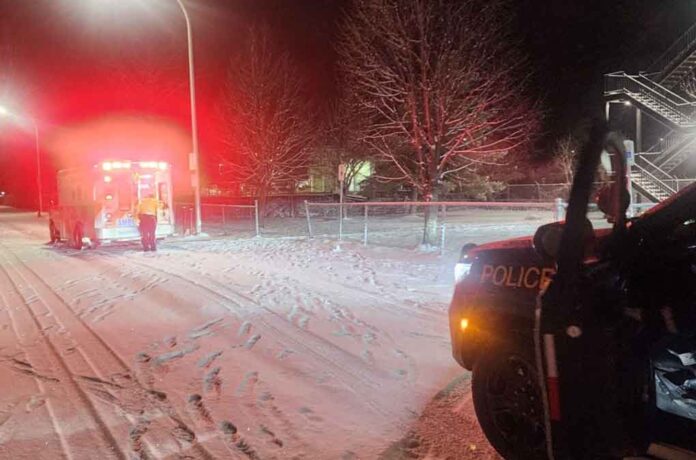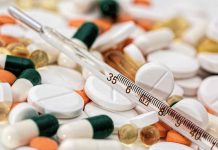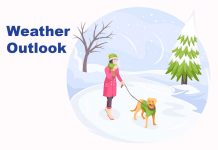
Dryden – NEWS – Following a distressing incident on Monday, February 12, 2024, where Dryden OPP intervened in a life-threatening overdose situation, the dangers of illicit street drugs mixed with lethal chemicals have come to the forefront.
This event not only underscores the perilous nature of drug addiction but also the vital need for readily available resources like Naloxone, which played a decisive role in saving the individual’s life thanks to a quick-thinking bystander who saw the individual and recognized the signs of an overdose.
The Hidden Dangers of Adulterated Street Drugs: A Growing Concern
The increasing practice among drug dealers of cutting drugs with harmful substances, including powerful opioids like fentanyl, poses an unseen threat to individuals battling addiction. This alarming trend highlights the critical need for heightened awareness and preventive measures within the Northwestern Ontario communities.
Naloxone’s Critical Role in Emergency Responses: Saving Lives Across Communities
Naloxone, a life-saving antidote for opioid overdoses, has become a beacon of hope in the fight against the overdose epidemic. Free naloxone kits are available in Ontario, demonstrating a significant step toward overdose prevention. Its role in the recent Dryden incident is a potent reminder of the importance of widespread naloxone accessibility and education on its usage.
Breaking the Cycle of Addiction and Depression: Support Systems and Recovery
The intertwined challenges of addiction and mental health require a comprehensive support network and effective treatment strategies. Professional help, including counseling, medical treatment, and peer support, is crucial for individuals seeking to overcome these hurdles. Northwestern Ontario’s commitment to providing these services is vital for recovery and rehabilitation.
Expanding Access to Resources: Local Help in Ignace, Dryden, Kenora, and Sioux Lookout
To bolster the support for individuals facing addiction and mental health issues, local resources in Ignace, Dryden, Kenora, and Sioux Lookout are crucial. These resources include:
- Ignace: Local health services and community centers offer support and information on accessing Naloxone. For more information, contact the Ignace Health Unit.
- Dryden: The Dryden Regional Health Centre provides mental health and addiction services. Naloxone kits are available at local pharmacies. For assistance, call the Health Centre at 807-223-8201.
- Kenora: The Kenora Substance Abuse and Mental Health Task Force offers resources and support for addiction recovery. Naloxone kits can be obtained from the Lake of the Woods District Hospital and participating pharmacies. Contact the Task Force or the Hospital at 807-468-9861.
- Sioux Lookout: Sioux Lookout First Nations Health Authority provides comprehensive support for addiction and mental health. Naloxone kits and training are available through local health programs. For information, call 807-737-1802.
These initiatives and resources across Northwestern Ontario are part of a broader effort to ensure that individuals and families affected by addiction have access to the support they need.
The dangers continue, drug dealers are not too worried about their customer base and are cutting their illicit drugs with dangerous chemicals. In Thunder Bay NORWEST Health reports that Xylazine is being found in drugs in the city.
What is Xylazine and why are drug dealers using it?
Xylazine, commonly known as an animal tranquilizer, is used in veterinary medicine to sedate horses, cattle, and other large animals. Its primary effects include sedation, muscle relaxation, and pain relief. However, its use has extended beyond veterinary applications, finding its way into the illicit drug market. Here are the key reasons why drug dealers are incorporating Xylazine into street drugs:
- Cost-Effectiveness: Xylazine is relatively inexpensive and readily available, making it an attractive option for drug dealers looking to extend their products inexpensively.
- Potency Enhancement: When mixed with other substances, Xylazine can enhance the sedative effects of opioids like heroin and fentanyl. This combination can make the drug’s effects more intense, potentially increasing its desirability among users seeking a stronger high.
- Filler Material: Dealers use Xylazine as a filler to increase the volume of their drug products, allowing them to sell more doses from the same quantity of the primary drug. This practice boosts their profits but adds significant risks for users.
- Physical Dependence: There is evidence to suggest that Xylazine can induce physical dependence in users, contributing to its appeal among dealers as it may increase repeat demand for their tainted products.
Health Risks and Concerns:
The inclusion of Xylazine in street drugs introduces several health risks. Its effects on humans, given that it’s not intended for human use, can be severe and include:
- Respiratory depression: Xylazine can significantly slow down breathing, leading to hypoxia (low oxygen levels in the body) or even respiratory arrest.
- Decreased heart rate: It can slow down the heart rate, posing risks of cardiac arrest in severe cases.
- Skin ulcers and infections: Xylazine has been linked to severe skin ulcers and infections at injection sites, which can be difficult to treat and may lead to more serious health complications.
- Overdose risk: When mixed with opioids, the risk of overdose increases significantly due to the combined respiratory depressing effects of both substances. Unlike opioid overdoses, Xylazine overdoses do not respond to Naloxone (Narcan), making them particularly dangerous.
How can drug users protect themselves?
Illicit drug use carries inherent risks, especially with the increasing prevalence of substances like fentanyl and xylazine contaminating street drugs. While the safest approach is to avoid illicit drug use altogether, harm reduction strategies can help protect those who do use. Here are some practical measures:
- Use in the Presence of Others: Never use drugs alone. If an overdose occurs, having someone nearby can save your life. Ensure at least one person present is equipped to call emergency services and administer first aid or Naloxone if needed.
- Carry and Know How to Use Naloxone: Naloxone can reverse opioid overdoses but not those from non-opioids like xylazine. However, because many street drugs are mixed with opioids, carrying Naloxone (Narcan) and knowing how to use it is crucial.
- Test Substances Before Use: Utilize drug-checking services or test strips to check for the presence of fentanyl, xylazine, or other harmful additives. While not foolproof, these tools can provide an additional layer of safety.
- Start with Smaller Doses: If using a new batch of a substance, start with a smaller dose than usual to test its strength and potential effects. This practice, known as “start low, go slow,” can help mitigate the risk of overdose.
- Adopt Safer Consumption Practices: If possible, opt for safer methods of consumption that reduce the risk of overdose and infection, such as snorting instead of injecting. Always use clean, sterile equipment to minimize the risk of infection and disease transmission.
- Stay Informed: Educate yourself about the substances you’re using, their effects, and the symptoms of overdose. Knowledge of what to do in an emergency can be life-saving.
- Utilize Harm Reduction Services: Engage with local harm reduction services, including safe consumption sites, where available. These services provide a safer environment for drug use under the supervision of trained staff who can intervene in the event of an overdose.
- Download Lifeguard Apps: Consider using apps designed to alert emergency services if you become unresponsive after taking drugs. These apps can call for help even if you’re using alone.
- Be Mindful of Mental Health: Substance use can be linked to underlying mental health issues. Seeking support for mental health concerns can be a critical step in reducing reliance on illicit drugs.
- Seek Support for Substance Use: If you’re considering reducing or stopping your drug use, explore the support and treatment options available. Many communities offer resources ranging from counselling and support groups to medication-assisted treatment.
How To Recognize Signs of an Overdose?
Recognizing the signs of an overdose quickly can be lifesaving, especially in situations involving opioids or other potent substances. Here are common signs that a passerby can recognize, indicating someone might be experiencing an overdose:
- Unusual Sleepiness or Unresponsiveness: If the individual cannot be awakened or responds very slowly, it could be a sign of an overdose. This is often noticeable in public places where the person appears to be more than just asleep.
- Shallow, Slow, or Stopped Breathing: This is one of the most dangerous signs of an overdose. The person may be breathing very slowly or not at all, indicating their body is not getting enough oxygen.
- Choking or Gurgling Sounds: These sounds can indicate that a person’s airway is partially blocked, which is common during an overdose.
- Blue or Grayish Skin Tone, Especially on Lips and Fingernails: This discoloration is a sign of oxygen deprivation and is particularly visible on lighter skin tones. For darker skin, it may be more noticeable on the lips, gums, and around the eyes.
- Limp Body: Weakness or a very limp body can indicate a serious level of intoxication or overdose.
- Pinpoint Pupils: Especially in the case of opioid overdose, the person’s pupils may become very small, even in dim lighting.
- Seizures or Convulsions: Some substances can cause seizures during an overdose.
- Vomiting: Sudden and uncontrollable vomiting can occur during an overdose, which is dangerous if the person is unconscious or semi-conscious due to the risk of aspiration.
- Confusion, Disorientation, or Paranoia: While these symptoms can be caused by various conditions, in the context of drug use, they might indicate an overdose.
- Cold and Clammy Skin: The person’s skin may feel cold to the touch and may be clammy or sweaty.
Recognizing these signs and acting swiftly by calling emergency services can make a significant difference in the outcome of an overdose situation.
If Naloxone is available and the overdose is suspected to involve opioids, administering it while waiting for emergency help can also be a critical step.
Always ensure to stay with the person until help arrives, keeping them in a safe position to prevent choking and provide reassurance.
By raising awareness, increasing the availability of Naloxone, and strengthening community support networks, we can make strides in the fight against drug addiction and its devastating impacts.
The recent overdose incident in Dryden is a stark reminder of the ongoing battle against addiction and the importance of community preparedness and resource availability. By taking collective action and providing accessible support and resources, we can help save lives and support those on the path to recovery.






